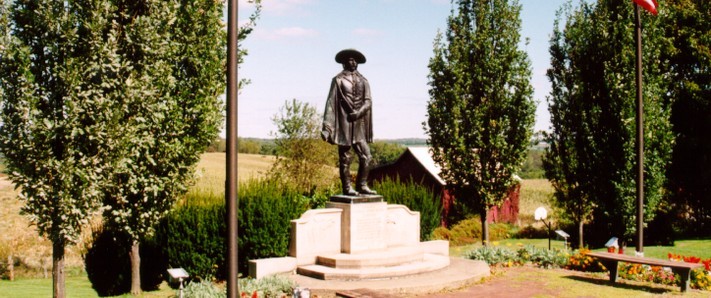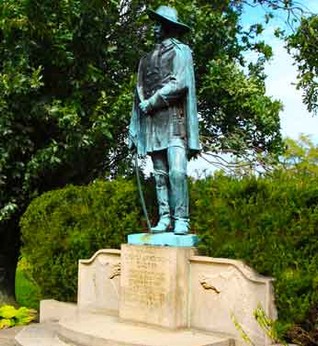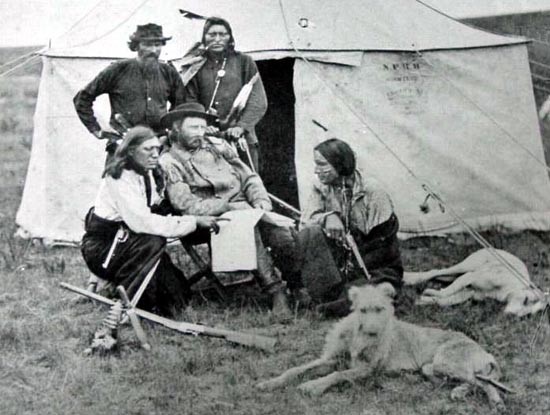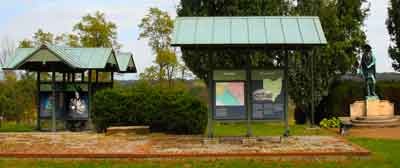Custer Memorial Historic Site
Introduction
Text-to-speech Audio
Images
A bronze statue stands on the site of General George Armstrong Custer's birthplace.

The statue was erected by the Ohio State Archeological and Historical society in 1931.

Custer and Bloody Knife (kneeling left), Custer's favorite Indian Scout

Custer Monument Park and Picnic Area

Backstory and Context
Text-to-speech Audio
In 1813, General Custer's great uncle Jacob Custer established New Rumley, a small community in eastern Ohio that sat along a coach road between Steubenville and New Philadelphia. Custer was born here on December 5, 1839, to Emanuel and Maria Kirkpatrick Custer. He was one of seven children. Two of his brothers, Thomas and Boston, and also a brother-in-law, Lieutenant James Calhoun served and died by his side at the Battle of the Little Big Horn.2
Custer attended Hopedale Normal College, in Hopedale, OH where he and another classmate were known to have carried coal to help pay for their room and board. After graduating in 1856, Custer taught school in Cadiz, Ohio. Afterwards, Custer entered West Point in June 1858 where he and his class graduated one year early because of the outbreak of the American Civil War. During this time, Custer married Elizabeth Bacon on February 9, 1864. Elizabeth followed him to every assignment, even during the latter days of the Civil War.
General Custer had many nicknames. The first one, "Autie," was given by him because when he was little he couldn't pronounce his last name. Custer's first girlfriend called him "bachelor boy" and at West Point, the other cadets called him "Fanny" because of his curly hair. Prior to the battle of Gettysburg, Custer was given the nickname "Boy General" because he was 23 years old and was given the rank of Brigadier General. Custer was given the nickname "Iron Butt" by his men that were under his command because the men thought he drove them too hard. But more famously, perhaps Custer's most famous nickname was given to him by the Indians: "Yellow Hair" because of his long blond hair.
By 1876, tensions had risen between the United States and the Plains Indian Tribes, leading to a battle on June 25th by the Little Bighorn River. This is where Custer’s 7th Cavalry met more than three times as many Indian warriors of the Lakota Tribes. Custer was led to believe that there were not this many Indians and decided to split his troop into three groups to attack. All the U.S. troops were killed in what is often referred to as, “Custer’s Last Stand.”
A bronze statue stands on the site of George Armstrong Custer's birthplace. Only the foundation of the house remains at this roadside park and picnic area. Visitors at the exhibit pavilion may read about Custer's life and the spirited qualities of the young soldier whose "Last Stand" has become a household name. The statue was erected by the Ohio State Archaeological and Historical society in 1931.
Sources
"Lt Col George Armstrong Custer." Little Bighorn Battlefield - National Park Service. Accessed on January 31, 2015. https://www.nps.gov/libi/learn/historyculture/lt-col-george-armstrong-custer.htm.
